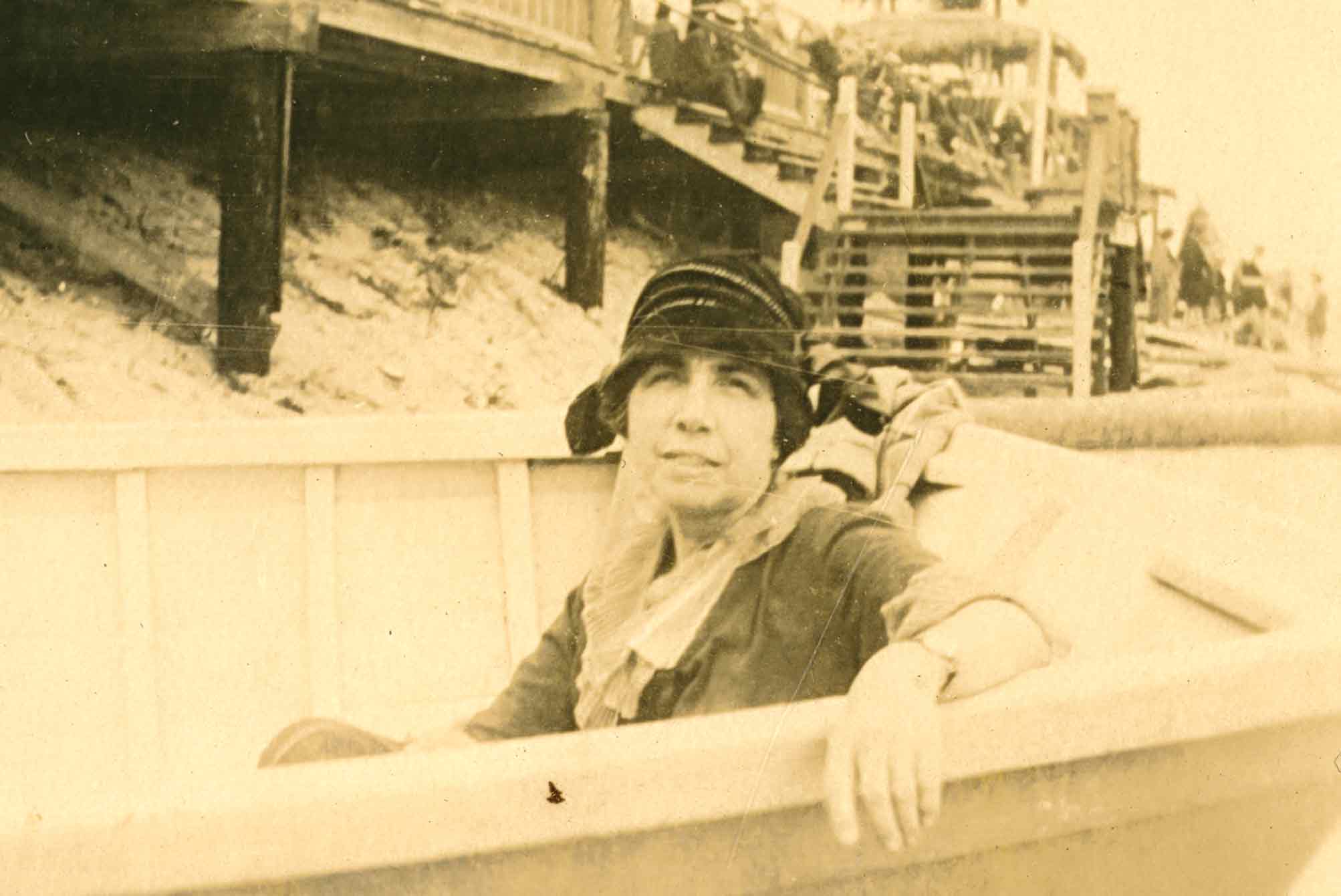
This article is reprinted from the 2015 spring issue of Tustenegee. For proper context, please note the original publication year of all reprinted articles here; they receive only minimal editing.
Please note: An oral history cannot be depended on for complete accuracy, as it is based on (1) the fascinating and complex human memory, and (2) communication of that memory, which varies due to genetics, social experience, gender, or education. While oral history is a valuable tool in the study of history, its content is not guaranteed to be correct.
This oral history of Daisy Emily Butler Lyman,s taped at the Lyman home at 504 “N” Street in West Palm Beach, Florida, on February 2, 1962, was conducted by retired broadcaster Rush Hughes for the Historical Society of Palm Beach County. Lise M. Steinhauer of History Speaks transcribed the taped oral history in 2006. This interview is part of the ongoing Oral History Project of the Historical Society.
Introduction
by Stacey Wroble, HSPBC Intern 2011
Daisy Emily Butler Lyman (1871-1964), West Palm Beach’s first teacher and the wife of one of Lantana’s founding sons, was born on March 25, 1871, in Cairo, Illinois.
Two years after her high school graduation, Daisy moved to Santa Fe, New Mexico, where she spent a year teaching, housekeeping, sewing, and cooking at a government-sponsored mission school for Native American girls separated from their families in the break-up of Geronimo’s tribe. She then returned home to attain a First Grade Teaching Certificate at the North Indiana Normal College in Valparaiso, Indiana.
Newly certified, Daisy received word from a friend who had recently moved to Jupiter that West Palm Beach was in need of a teacher for its first school. Moving to south Florida in the summer of 1894, Daisy was hired. In her first year, Daisy taught thirteen pupils, ranging in age from eight to fourteen years. Her stay in West Palm Beach, at the original schoolhouse set up in the old Congregational Church on the corner of Datura and Olive streets, was short-lived. West Palm Beach was then little more than a community of transient construction workers living in tents along Clematis Street. Its unsettledness and few signs of growth worried Daisy, and she applied for a teaching position at the Lantana school.
Daisy began teaching at the one-room schoolhouse in Lantana the following year. While living at the Bassett Hotel and boarding with Lillian Lyman, the daughter of Lantana’s founding family, Daisy became acquainted with George Ralph Lyman, Lillian’s brother and co-founder of the well known general store and Indian trading post, M.B. Lyman & Co. The couple married on June 3, 1896.
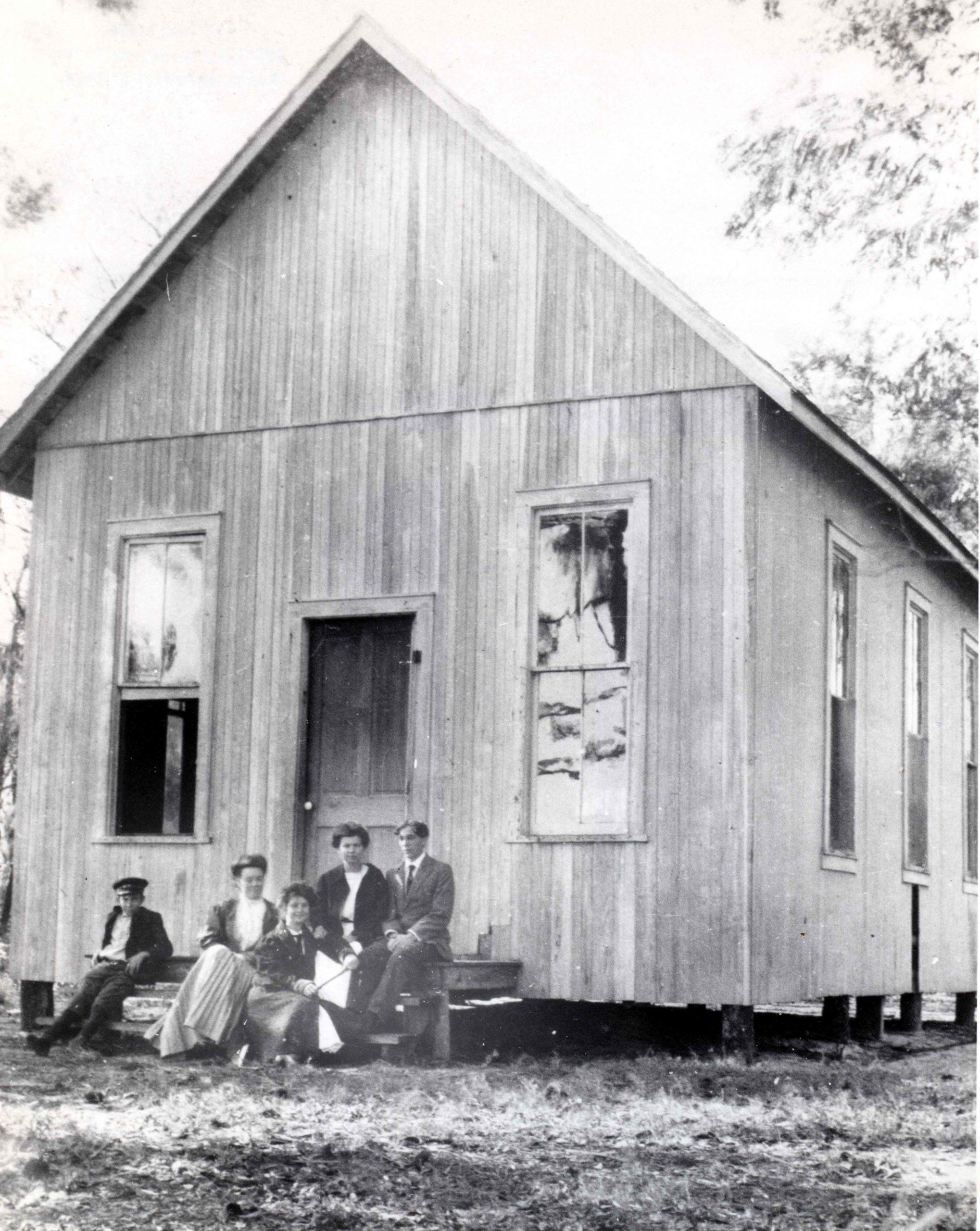
Daisy took a sabbatical from the classroom for several years, returning when her two sons, Clarence (1898-1962) and Ralph (1900-1979) had reached the ages of five and three, respectively. Daisy moved the family to Gainesville during the boys’ adolescence so they could be close to the University of Florida. While there, she taught in local Gainesville schools.
Once her boys had been admitted to the university, Daisy moved back to Palm Beach County. She spent the next twenty-two years teaching general science to seventh and eighth grade students. Her academic curiosity never waned. In the years leading to her retirement, she spent the summer months attending educational programs at various universities throughout the United States. In 1940, at the age of sixty-nine, she became the oldest woman to take summer classes at the University of Florida.
The following summer, the faculty of Palm Beach Junior High School (Daisy’s last school) honored her with a retirement reception at the Norton Gallery and School of Art. Daisy received nearly 500 guests and was commended by the keynote speaker and her former student, Judge Curtis E. Chillingworth, for her selfless and untiring dedication to public education. Although formally retired, Daisy continued to substitute teach in Palm Beach County schools. Her later years also found her an active member in civic organizations and at the First Presbyterian Church. In September 1964, two weeks after suffering a stroke that robbed her of her speech, Daisy died at home at the age of 93. She is buried beside her husband, George, at Woodlawn Cemetery in West Palm Beach.

HUGHES: I am talking to one of the true pioneers of this area. What is your name?
LYMAN: Mrs. Lyman, Mrs. Daisy Lyman.
HUGHES: Mrs. Lyman, your address is 504 “N” Street, right?
LYMAN: Right, West Palm Beach.
HUGHES: Now, how long have you lived in this area?
LYMAN: Since 1894—not right here in this place, but in Florida—since 1894. That’s when I came here.
HUGHES: How old were you then?
LYMAN: I was twenty-three.
HUGHES: Isn’t that a sneaky way to find out how old you are?
LYMAN: Yeees.
HUGHES: Where’d you come from?
LYMAN: I came from Illinois. I was born and raised in southern Illinois near Cairo, part of the time in Cairo and part of the time in the area around Cairo.
HUGHES: Did you come here as a bride?
LYMAN: No.
HUGHES: You weren’t married when you came here.
LYMAN: I came here in 1894 to teach school.
HUGHES: Oh, where’s that?
LYMAN: West Palm Beach. I had a friend that I had met in New Mexico. I was teaching in an Indian school in Santa Fe, New Mexico, and the people that run that school had a niece that came out to work in the school. You don’t want all this.
HUGHES: Just go right ahead, yes.
LYMAN: And she married there the man that was in the Weather Bureau Service. And I was there and teaching in the school and I got acquainted with her there, you see. And her husband was transferred to Jupiter in the Weather Bureau. This was then—from Stuart way down past Homestead and out to Okeechobee Road was Dade County. And he got elected on the School Board. So she wrote me that Will—that’s her husband—was elected on the School Board and said if I would come to Florida, I could have any school I wanted in the county. There were just seven schools from Stuart to Homestead and out to Okeechobee. So I was finishing that year of my teacher’s degree in college in Valparaiso, Indiana, and when I finished—in August, it was—I came here in September of 1894.
HUGHES: Now why did you choose Lake Worth, of all the places you could’ve gone in Florida?
LYMAN: Well, because my friend was here in Lake Worth. They were asking me to come to them, you see, and teach in this county where he was elected county superintendent—not county superintendent, member of the School Board.
HUGHES: Where was this school located?
LYMAN: Well, I taught [at] the first school in West Palm Beach. There was other schools located in the county. There was one at Riviera, one at Lantana—Lantana was an older section than this, residential section—one at Lemon City — one at Palm Beach, but not in West Palm Beach. That was an old school in Palm Beach before there was any settlement here at all.
HUGHES: Was the Palm Beach school the first school in Florida?
LYMAN: No, no, not the first school in Florida, but one of the first schools in the county. I don’t just know what its status was exactly, but it was one of the first schools in the county. Did Mrs. [Belle Dimick] Enos tell you that? Didn’t she tell you anything about the schools?
HUGHES: Yes, she told me about the school over in Palm Beach.
LYMAN: Yes, well, that’s what I’m talking about.
HUGHES: I got the impression from her, it was the first school in the county.
LYMAN: Well, it may’ve been, but I don’t hardly believe it.
HUGHES: Now when you taught school here, how many pupils would you have in a school?
LYMAN: Well, I had opened about fourteen. I opened the very first school in West Palm Beach. I opened it here. And it was located in the little frame building, one room frame . . . hutch, you might say, on the corner of Datura and Olive.
HUGHES: Right downtown.
LYMAN: Yes, right, just one block south of Clematis on Datura, and, what did I say just now?
HUGHES: Olive?
LYMAN: Olive.
LYMAN: That was 1894, and I opened with about fourteen pupils.
HUGHES: And you taught them what grades?
LYMAN: All grades from kindergarten, from primary up to the eighth.
HUGHES: To the eighth.
LYMAN: Uh-huh.
HUGHES: And all in one room.
LYMAN: All in one room.
HUGHES: How’d you control the kids that you weren’t teaching?
LYMAN: Oh, I had the older ones in charge of the smaller ones and I had a class up—now, the eighth grade, I’d have a class up and the seventh grade pupils—one or two or three—would be taking care of the little ones on the one side, you know. They just helped around like that. I didn’t have much trouble. I taught school in Illinois before I came here, in the country schools, mixed grades that way, all grades from the eighth grade to the tiny ones.
HUGHES: You were a diplomat as well as a teacher, huh?
LYMAN: Well, I don’t know if I was a diplomat or not, but I had to control them. I had to do that, you see, to teach them at school, and that’s what the schools were then in those days.
HUGHES: Is this a technique you were taught in teacher’s college?
LYMAN: Yes. I took the teacher’s course, and the lady that was in charge of that put us in classes and made us teach right there before her, don’t you see? And we got our instructions of how to conduct it and how to manage and how to classify and all like that in that school.
HUGHES: Do you think the youngsters in your day learned, really learned, in school?
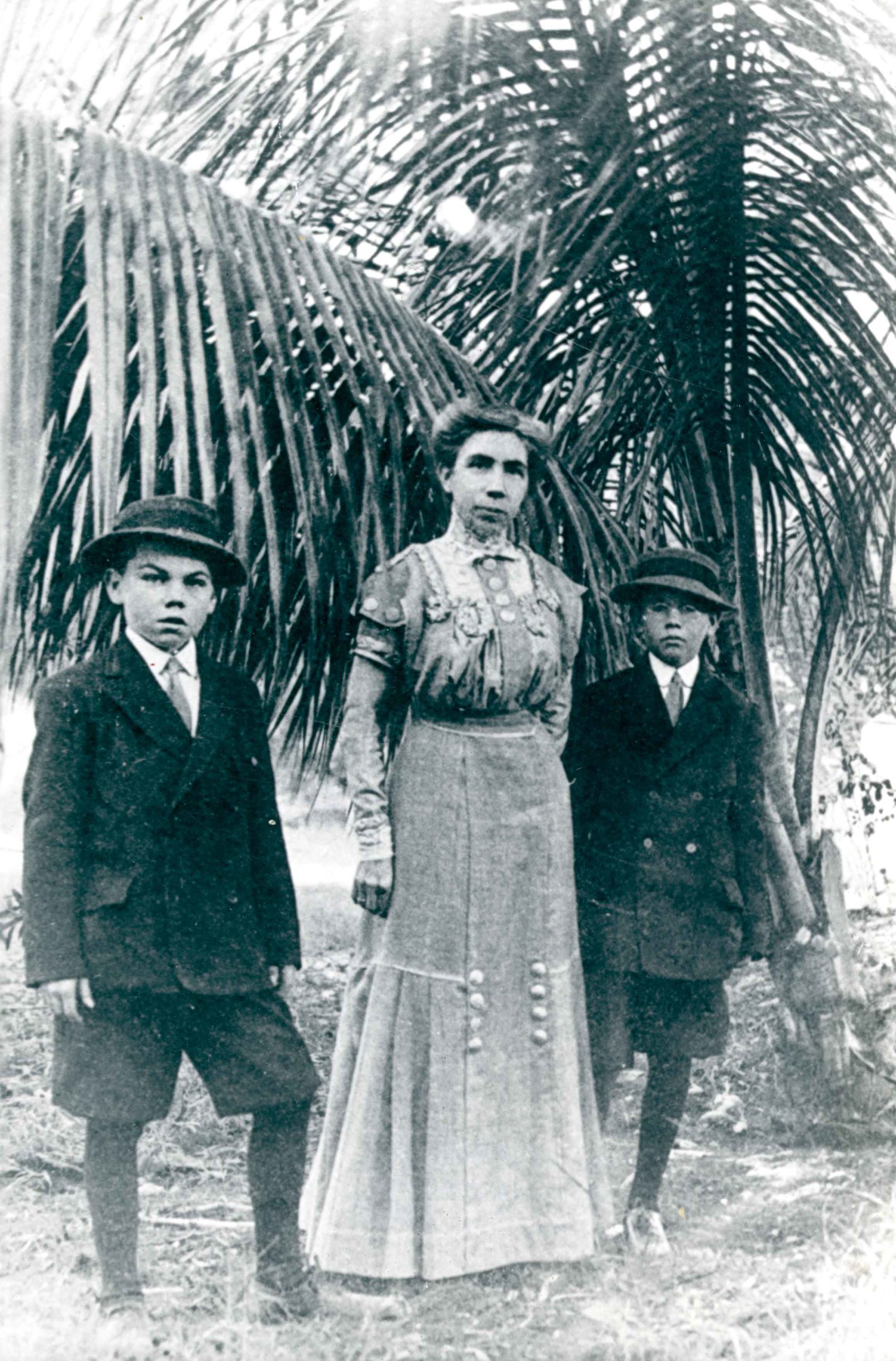
LYMAN: Sure. Yes, I do think they learned. Why, I had children in my school that grew up and in just two or three years, could take a teacher’s examination and go out and teach in the lower grades from the schools that we were uh conducting right there at that time in 1894 and ’95.
HUGHES: How old would they be when they graduated from your school?
LYMAN: Oh, about sixteen. They could go and take a country school with little children in it and teach it. All they had to do was to manage the children and teach ‘em to read and write, and they learned that from the school, from me. Now, I don’t know how the other teachers were, but I was taught in Valparaiso, this teacher’s college, how to teach little children, how to present the exercises to them and for them to learn it and make use of it and all like that. That’s what I was taught in school there, and when I came here, I had taught one school in Illinois.
My brother was a teacher, by the way. He taught all grades and I went to school to him. He was a college graduate from Valparaiso and he was taught in that school how to conduct and manage his school. I went to school to him, then I went to Valparaiso myself, don’t you see, and we, in those days, had all grades from the primary on up to—well, he had even higher than the eighth grade but I never had any higher than the eighth grade in all my classes. Then of course, after I came to West Palm Beach to teach, I had just grade school, just a grade, you know, sixth or seventh or eighth grade or whatever grade I was put in.
HUGHES: How long was the school year in those days?
LYMAN: Eight months.
HUGHES: And how much did you get paid?
LYMAN: Well, first school I taught here in West Palm Beach, I got sixty dollars a month.
HUGHES: You had to pay your own room and board out of that?
LYMAN: Yeah, four dollars a week.
HUGHES: Well, you did pretty well, didn’t you? [laughs] You made some money.
LYMAN: [laughs] Yeah.
HUGHES: How long did you teach?
LYMAN: Well, I taught West Palm Beach that first year. I could’ve taught here on, but my friend that was elected to the School Board figured that it would be too difficult a task for me to take this school here, on account of it being a railroad terminal. The Poinciana had just been built. All the workmen that had worked on the Poinciana was—when Mr. Flagler got his place well enough along that he could open it for a season but still wanted workmen—he had them living in tents on the grounds around the Poinciana while they were building it—he bought a homestead that ran right through the center of town, Clematis Avenue run right through that—was a Mr. Hillhouse homesteaded that—and made Clematis Avenue—just run a street right through there—and moved all of his workmen over from the grounds so he could beautify the grounds and open up the Poinciana in 1894. And they bought lots for about fifty dollars a piece on Clematis Avenue up and down. And the houses were just huts, just little frame houses and huts and little stores and things all along from the lake to this lake up here, you see, right up the street—and that’s all the streets there was in West Palm Beach when I came here. That church was built—well, there were—Olive was—it wasn’t paved, but that church was on the next corner, next to Clematis Avenue, you see. That little frame building, they called it a church, and they had church services there Sundays and Wednesdays.
HUGHES: How long did Mr. Flagler’s shacks stand?
LYMAN: Oh, they gradually disappeared when people built better ones, you know. The next year after I taught at West Palm Beach, as I started to tell you, this friend of mine said that the school would be too difficult for me for the next year because of all the workmen coming in, the families and children, boys and all that sort of thing that were difficult to handle, and he would rather I would go to another place that would be easier. So he sent me to Lantana. That was an older settlement. My husband’s people had settled that several years before and there was a small school there, all grades, with about thirteen or fourteen children or fifteen, something like that. So Mr. Wittmire, the School Board member, my friend—sent me there, and his wife went to Jupiter. They had a home in Jupiter. He had taken up a homestead up in there on Indian River and they had a home in Jupiter. So his wife was a teacher and so she went from—to Riviera and taught school and he sent me to Lantana. And I met Mr. Lyman there and married him at the end of that term, you see.
HUGHES: Oh, I see. He was a teacher too?
LYMAN: No, no. He and his brother were in the supply business there. They had a store and they supplied all the farmers down the lakeshore with fertilizer, supplies at—grocery supplies—and they had a general store there and he and his brother run that. And he had a launch, a little motorboat that he delivered with, and he would leave out a barrel so I could go with him.
HUGHES: [laughs] Did you think that was complimentary?
LYMAN: Oooh, yeees.
HUGHES: A barrel weighed about four hundred pounds, didn’t it? [laughs]
LYMAN: Well, it was space more than anything else. [laughs] I wasn’t quite that big either.
HUGHES: Mrs. Lyman, in those days in schools, did you have what we now call “juvenile delinquent boys” and “incorrigible girls”?
LYMAN: Yes, we had some, not to any great extent. I had to do spanking. I’d spank ‘em every once in a while or switch ‘em with a little switch, y’know.
HUGHES: Did that keep ‘em in line?
LYMAN: Yeah. Their parents agreed it was all right.
HUGHES: I was gonna ask. Nowadays, you know, parents disagree.
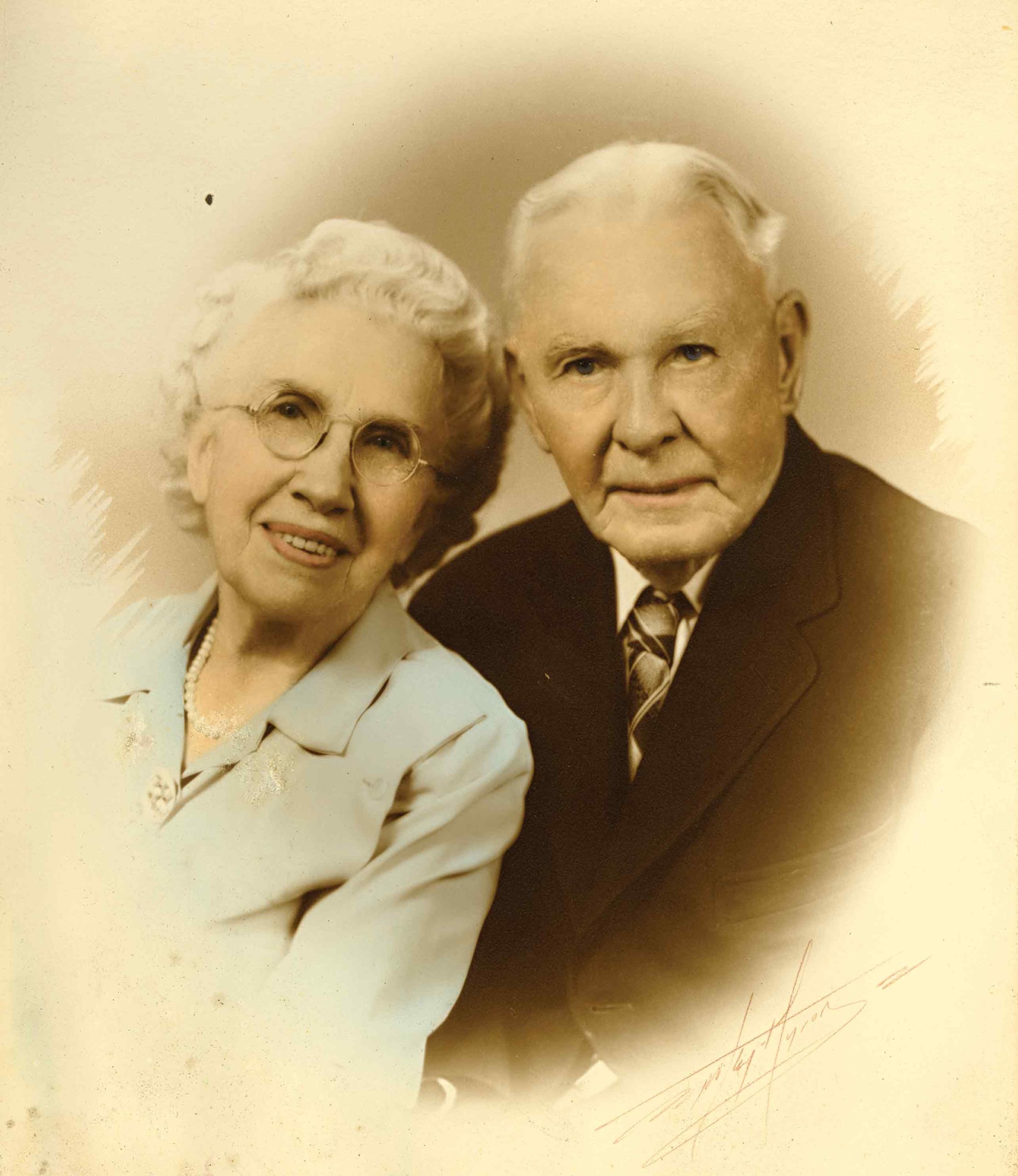
LYMAN: Oh, no, they wouldn’t stand for it now, but they wanted me to make ‘em mind. I had a boy that was rather unruly. I was doing blackboard work and I had my little folks standing along the row here and this one was about seven, eight years old—nine, something like that. And of course, the minute my back was turned, he was up to mischief, poking the others in the class, doing something. And I turned around and caught him at it. And I jumped at him to shake him like this, y’know, and I had a pointer in my hand and I dropped that pointer. And every child in that school vowed that I struck the child with that pointer. I dropped it and it clattered and I shook him, and soon as I did that— he had a little sister sittin’ in the back, in one of the seats in the back. She jumped up, right over the backs of the seats and went flying home and pretty soon, her mother came to the door. She wanted to see the stick I hit that boy with! I said, “I didn’t hit your boy.” You couldn’t get one child in that school to say that I didn’t hit that boy. They thought I did, y’know, but I didn’t. But I had it in my hand and I dropped it, and I just jumped at him like this and I suppose it looked like that I hit him, y’know. And so she bussed me out and went on. Well, her husband had a meat shop and at that time I had a room and was doing my own cooking, y’know. It was hard to get board and board was pretty high, even at that time, because of tourists and everything. So I went in to the meat shop to get me some meat, and Mr. Davis, the old man, he said, “Miz Lyman, I want to apologize for what my wife did. Any time that boy gets out of line, you just wear him out,” he said. “Just do what you please, wear him out.”
HUGHES: [laughs]
LYMAN: So I didn’t feel uneasy about what Mrs. Davis would do anymore. But I never did have to do anything more. I jumped at him and scared him so, and the others too—they didn’t know that I would do a thing like that, y’know. [laughs] So they all got scared enough that they behaved themselves. I never had any more whipping or spanking or anything like that to do.
HUGHES: This was before the days of the PTA.
LYMAN: Yes, oh yes, there wasn’t no PTA then.
HUGHES: You’d have been up and down—[laughs]
LYMAN: I’d have been up against it, wouldn’t I? [both laugh] Well, I was taught in Illinois, I was taught by my brother. He thrashed ‘em if they needed it, if they got out of line. And I was taught, the main thing was to make ‘em mind, that you couldn’t carry on—my brother used to say, “You can’t carry on a school, you can’t conduct a school or teach ‘em anything unless they behave. And if they don’t behave without a spanking, you’re gonna have to give it to them.” That was born and bred in me, you see, and I didn’t know anything else but to do that. I taught in Lantana a number of years before we moved back up here. And when we moved back up here, Mr. Lyman was gonna go in business up here and I applied to the School Board and I happened to know the county superintendent and he—the first thing he asked me, “Can you make ‘em mind?” I says, “Well, I can try.” I says, “I’ve done it so far.” Well, that’s all right, if I could make ‘em mind, that’s all he cared—[laughs] he didn’t care whether they had education or not.
HUGHES: As the community grew in years, when did high schools come in as separate units? Or did they just add on to the eighth grades in the elementary schools?
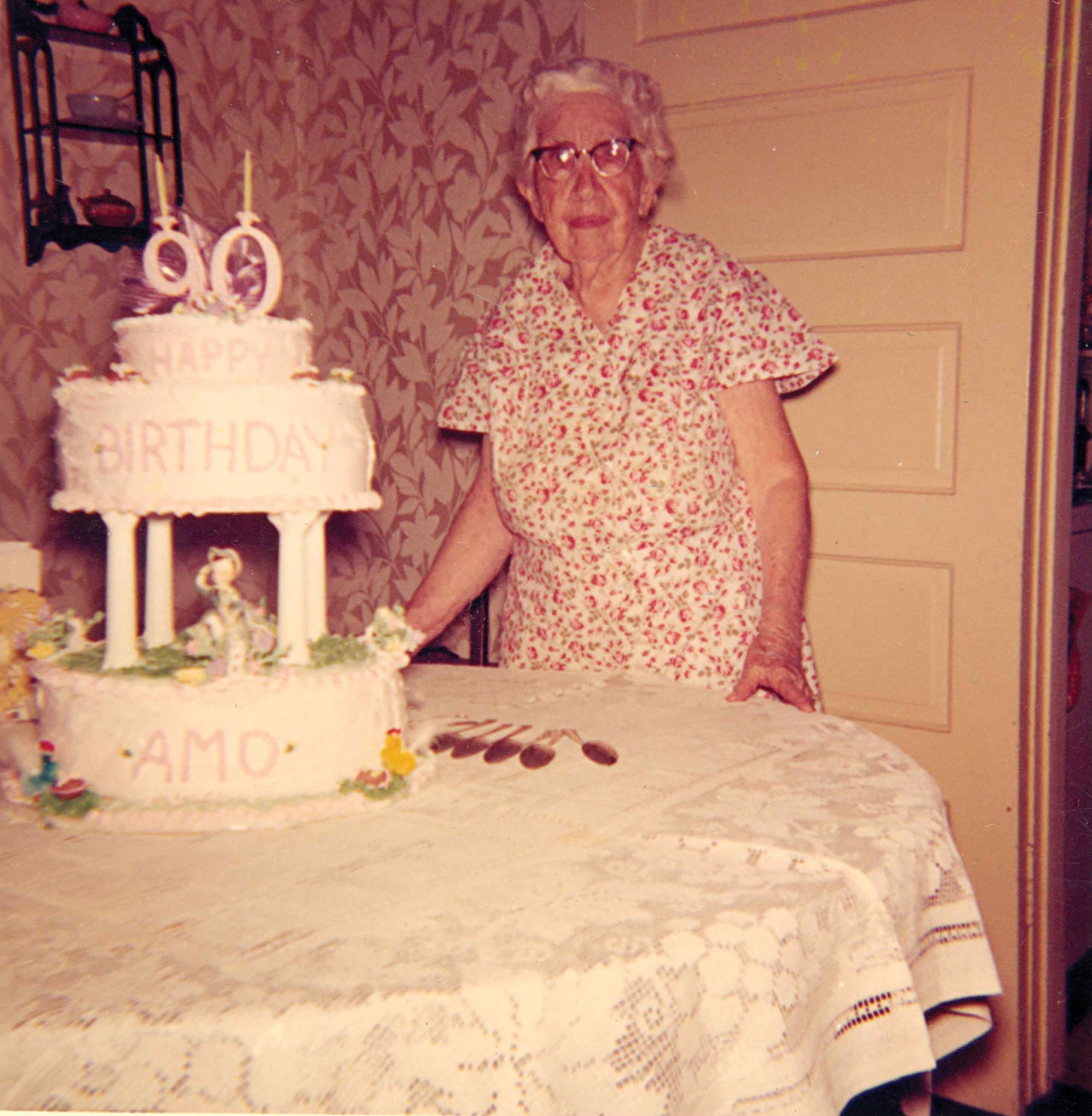
LYMAN: They gradually grew. It went up to the eighth grade and ninth. I think the last that I taught in the school here was when the tenth grade was inaugurated. I didn’t teach the tenth grade, I always taught in the lower grades. Seventh and eighth was my hangout. About the time that they instituted the high school here, I went to Gainesville. My boys at that time had grown up and were getting ready for high school and there was no high school here, and I wanted them to get in touch with the university [of Florida]. I wanted them to get interested in goin’ through high school and goin’ to that university. The main idea of my whole life was to get my boys through the university.
HUGHES: How many did you have?
LYMAN: Two. I had been to summer school up there in Gainesville and Murphree was the president, and I wrote to Murphree. I had met him when I was up there at summer school. I told him I wanted to get into the public schools there because of my boys, and to get into the university. By that time—he had been in the public schools—he was president of the university [of Florida], you see. So he handed my letter to the principal of the public schools, a Professor Castles, he had gone to school in Valparaiso, same school that I had c____. And he knew what they taught in Valparaiso and how they trained the teachers. He says, “Anybody that’s been to Valparaiso’s good enough for me.” I got a letter from him right away and he put me in the schools up there, you see. So I went up there with my boys and took them through high school. I taught seven years! Left my home and my husband. I’d go up in the winter. Terms were only seven months then, you see. Mr. Lyman was in the bicycle business down here and we had a home right over there, right across the cemetery over there in that park over there. I would go to Gainesville and teach and we’d come home for two weeks’ vacation, the boys and me—and he’d come up every once in a while and visit us a week or a few days. He had help in the shop so that he could leave a few days at a time and he’d come up and visit us. And I stuck it out for seven years.
HUGHES: And you got the boys through school. What’d they graduate as?
LYMAN: Well, they didn’t either one of them graduate in university. They went about two or three years. My oldest boy took civil engineering and he was only three years. He lacked one year for graduating. But he was offered a county job, a county engineering job, and it was awful good pay, and he had just considered himself old enough to get married. So they ran away and got married—and he took the job and that was the end—at twenty, see. And he’s been in civil engineering ever since. He’s connected with the Perry Construction Company now—been with them for thirty or forty years.
HUGHES: When did your husband go into the bicycle business down here?
LYMAN: Oh, let me see. . . we were married in 1896. . . about 1900.
HUGHES: That was a great means of transportation then, wasn’t it?
LYMAN: Yes, that was the only means of transportation then. There were no roads and you could only ride the bicycles up and down Clematis and just right around in town there, you see.
HUGHES: What’d they have, wooden sidewalks?
LYMAN: No, they had shell, oyster shell. They would grade the streets and go out to these shell mounds. Do you know where the shell mounds are? Well, they brought in oyster shell. Clematis was shelled with oyster shells from those banks of oyster shells out—I don’t know, there’s some around Jupiter and . . . I don’t remember now where those mounds were but they hauled ‘em in from there and graded them, you know, and pounded them down. They’d get down with posts like this and pound ‘em, that’s about all they had to level ‘em off with.
HUGHES: Do you remember the names of some of the bicycles or how much they cost?
LYMAN: Well, mine cost fifty dollars. I don’t know what the regular price was. I guess that was about general price. I can’t remember the names now.
HUGHES: Was there a Pierce or a Columbia? Iver-Johnson? Do you remember any of those?
LYMAN: Iver-Johnson, I remember. It didn’t take long to teach anybody how to ride a bicycle. Just two or three times and they were up and gone. Soon as they could balance themselves, why, they were all right.
HUGHES: Did the kids ride ‘em to picnics?
LYMAN: Yes, they rode ‘em—well, not to picnics, they rode ‘em to school. Used to have bicycle racks up there, just rows and rows of bicycle racks. I don’t know whether they have any now or not.
HUGHES: Oh, yes!
LYMAN: Do they? Well, they had bicycle racks in those days. And Mr. Lyman went into the bicycle business because that was the most lucrative business then at that time, you know. It just almost run itself. People were just buyin’ bicycles and having accidents and things happen to them that had to be repaired. He had a couple of young men in the shop with him that helped him. And he was a mechanic himself. He had been in Jacksonville in mechanic work so it just suited him to get in that business. Later, as he went on in the bicycle business, he moved his shop over in Palm Beach and did mostly renting of bicycles to the tourists. Oh! The tourists used to come in the fall, they’d come down here to Palm Beach and that was the only way they had to get around, you know, riding up and down. They thought that was wonderful, to get a bicycle to ride. Mr. Lyman did a good, lucrative business. In fact, he was in that until he was retired, in that renting of bicycles.
HUGHES: When did the automobile come in here? There were horse-and-carriage days too, weren’t there?
LYMAN: Yeah, not much horse and carriage; there were a few. Mr. Lyman had a partner by the name of G. C. Barko. After it started for a while, they went in business together. And Mr. Barko and he had the first automobiles. They had two automobiles. I think—I don’t know whether one was a Ford or not but just little one-seater, you know, and they rented. And they made money on that. Oh, that was wonderful, to rent those automobiles to ride up and down. All the road was was this county road. We called it the “County Road” then, all the way down to Lantana, it was.
HUGHES: It didn’t go any farther south than that?
LYMAN: No, not in our time, it didn’t. Of course, it continued later. [laughs] It’s so far in the past that I can’t remember the details of things very well.
HUGHES: Wasn’t it a lonely life for a schoolteacher before you were married?
LYMAN: I didn’t think it was. I didn’t suffer from loneliness. There was—now when I went to Lantana—see, I taught here one year, then I went to Lantana. Well now, Lantana was an older community and the people were acquainted with each other. And there were several young men there and no young ladies.
HUGHES: Oh! Oh, you had the market, huh? [laughs]
LYMAN: I had the market all to myself. And every boy, every fella, had a boat, and the fella that had the nicest boat and could give you the nicest time was the one that got the dates.
HUGHES: Mr. Lyman must’ve been pretty high up on the list.
LYMAN: [laughs] Well, he had a sailboat and a launch, you see. And we could go in the launch, if we wanted to go to the beach or make a quick trip, several of us, we could go in the launch. If we wanted to go in the sailboat where the whole family could go and we could sail up and down the lake anywhere we wanted to go, up and down the lake. Mrs. Enos’ family—the Dimicks– lived across here at Palm Beach. There was a family by the name of Pierce that lived across from Hypoluxo on the island there, and they had a son by the name of Charles. He had a boat, and he and Miles were great friends. There was another family two or three miles north of Lantana on the lakeshore by the name of Bradley, and he was a School Board member—our county superintendent. Well, he had two sons and they had sailboats. And there was Mrs. Enos and myself and Lillie Pierce and two or three more young people. We gabbed—parties, you know, on the beach—why, we weren’t lonely. We didn’t know what it was to be lonesome. We had those boys trained so that anytime we were free [laughs], we had a boat to go in and someplace to go!
HUGHES: [laughs] Well, of course, being the schoolteacher in the community, you had to be pretty careful about going—you couldn’t go out with them alone, could you?
LYMAN: Well, I did.
HUGHES: Did you really? My goodness.
LYMAN: I sure did. When he wanted to go out on the boat, the sailboat—“Come let’s take a sail”—I went with him. Nobody thought anything about it. That’s the only place there was to go. There wasn’t anything that could be criticized much because a sail out on the ocean had to be attended to pretty strictly, you know. [both laugh]
HUGHES: Where did these boats come from? Were they built around here?
LYMAN: No, I guess they got them from Jacksonville and all. My husband’s boat, I think, came from Jacksonville. See, they got their supplies from Jacksonville and they were brought in sailboats that sailed up and down the coast. My husband and his brother had a—it wasn’t a yacht, it was a good big-sized freight boat– and they used to carry freight from here to Jacksonville. They’d come down from Jacksonville with a load of all kind of supplies, fertilizer and groceries and things like that to supply the people that lived down here, and they’d go back with pineapples and supplies from down here. In those days, they grew a lot of pineapples down here.
HUGHES: Yes, they did.
LYMAN: He used to take boatloads of pineapples up to Jacksonville. And of course, along the Indian River, you could get oranges, you see. The Indian River oranges were very highly rated at that time. And vegetables, people grew vegetables. The farmers down here, they grew all kinds of vegetables and things that would keep. Now, of course, the perishable things—they were going by sailboat, they weren’t going by motorboats, and sometimes they’d have calms and be stagnated along the coast and couldn’t get there.
HUGHES: Did they go on the outside or come inland?
LYMAN: Part of the way [outside] and part of the way inside. I think they came from Titusville down the Indian River, and then they’d go from, part of the way, on the outside up to Jacksonville, the ocean way. Sometimes, after they got their big boat, the larger freight boat—they’d go all the way outside, you see.
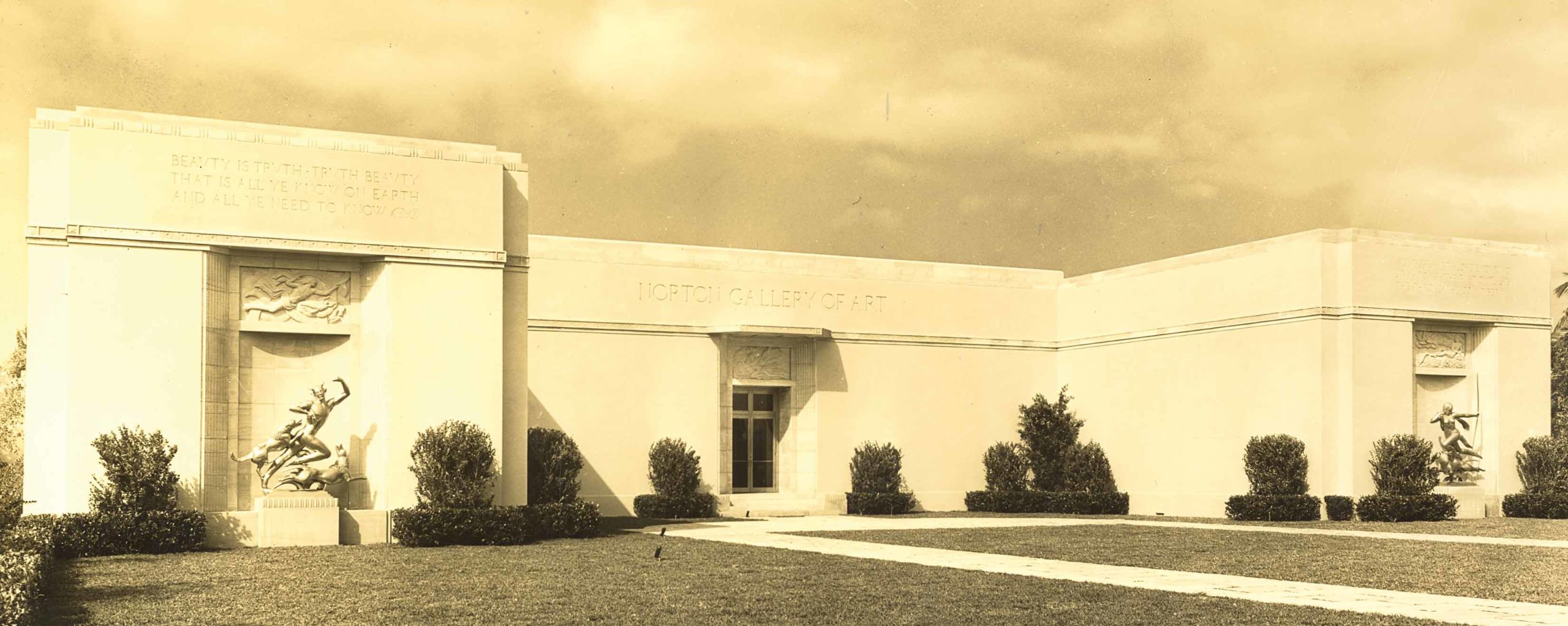
HUGHES: Was the inlet built then?
LYMAN: There was an inlet, but not like it is now. They used to get inside with the boat, yes. There was an inlet, but I don’t know who built it. My husband was wrecked at that inlet and his boat was wrecked. And he lost his cargo and he almost lost his life. He was for three or four days unconscious from the strain and exposure of trying to save his cargo. There was no storm here but there was a storm at sea and it caused great what they call “rollers,” and you couldn’t sail out of it cause there’s not a breath of wind stirring. And it just washed that boat ashore and he couldn’t get out of it. Finally, it hit on the reef and pounded to pieces on the reef.
HUGHES: Even his freight boat was under sail. He had no motor for it.
LYMAN: No, he had no motor. It was a sailboat. I don’t think he sailed anymore. I don’t think he used the boat anymore for cargoes. When I came here in 1894, the railroad only came as far as Titusville, and I had to come from Titusville by steamer to Jupiter. During that year, in 1894 . . . and 5, the railroad was continued on to Miami.
HUGHES: And that took the freight boat out of the business.
LYMAN: Uh-huh, the freights then—well, they did a good deal of business on the lakeshore, along the lake, up and down the lake. You see, this lake is twenty miles long, twenty or twenty-five miles long, and people—there was no roads, there was no way to get things, only by boat. Of course, there were just small boats that worked up and down the lake and delivered freight of all kinds. They had to have fertilizer of all kinds and they had to have groceries and things like that, you see. And the little stores had to be supplied and that took a good deal of work along the lake.
HUGHES: What did it cost—when you were “batching,” so to speak, and doing your own cooking, what did it cost you to eat for a week, have you any idea?
LYMAN: No, I really haven’t. My salary was sixty dollars a month and I know I saved enough off of it to—I had my living and I had to buy clothes, and I saved enough of it to go back to school for the summer term of school in Valparaiso, so it couldn’t have been very high priced. Oh, four or five dollars a week, I imagine, would keep me in groceries and living expenses.
HUGHES: Of course, it’s a great victory if a human being can do it on fifteen now.
LYMAN: Yes, I’d say it is! I don’t even keep count of it now, I just have to have it and that’s all there is to it. [laughs]
HUGHES: Well, as you look back over a very interesting and very active life, what one event in your mind stands out?
LYMAN: Oh my goodness, I wouldn’t hardly know how to say there was any one event. I guess getting married was the [laughs] big event of my life at that time, and . . . well . . . I was gonna say the year that I was appointed to teach up here in West Palm Beach after living down in the country there. My boys were four and five years old, I’d been married about six or seven years and I had lived down there in that area, in the country area, all that time, and to get back into West Palm Beach and be a teacher, an appointed teacher to the West Palm Beach school, was quite a victory for me, a country teacher, you know.
HUGHES: Outside of your husband and your children, you’d say your teaching was the love of your life.
LYMAN: Yes, my teaching was the main thing of my life. And I went to Gainesville to summer school. And when I was appointed to the Gainesville school, that was the high point in my life too. I felt very elated over the fact that I’d kept up my schoolwork and could get into a city school in Gainesville where the university was, you see. For my boys to go to the university. They were in high school here but they had to finish high school up there and go to the university. My height of my ambition was for them to graduate from the university but . . .
HUGHES: Were you disappointed when they didn’t?
LYMAN: Yes, I was disappointed but after all, I imagine it was the best because they married. The oldest one married a very fine girl and they have lived a happy life, and she’s been a help to him and he got right into the engineering work, you see, and has followed it up ever since., I expect that that was the best thing that could’ve happened after all. I don’t have any regrets about it, anyway. [laughs]
HUGHES: Well, Mrs. Lyman, I want to thank you very much. You’ve been a very interesting guest.
LYMAN: Well, I hope I have. I don’t think there’s much that you can hold onto that is of any interest, but—
HUGHES: I think you’ll find that there’s a great deal that will be very interesting to the people who are interested in these tapes. I want to thank you very much.
LYMAN: You’re welcome, I’m sure.
Historical Society of Palm Beach County
You might also enjoy
A Celebration of Pride
Advertisement announcing the opening of H.G. Roosters in 1984. Celebrating
Black Cultural Heritage Trail
Learn of the Rich Cultural Heritage of Palm Beach County
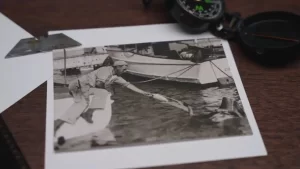
The Conchtown Rumrunners
The Conchtown Rumrunners Behind the Palms, Episode 2 Volstead Act

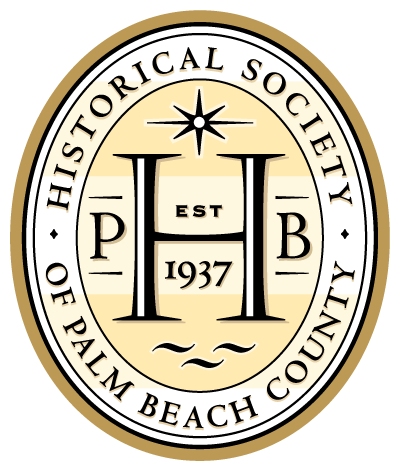


 Ste
Ste






What a beautiful interview with Mrs. Lyman, a wonderful beautiful lady